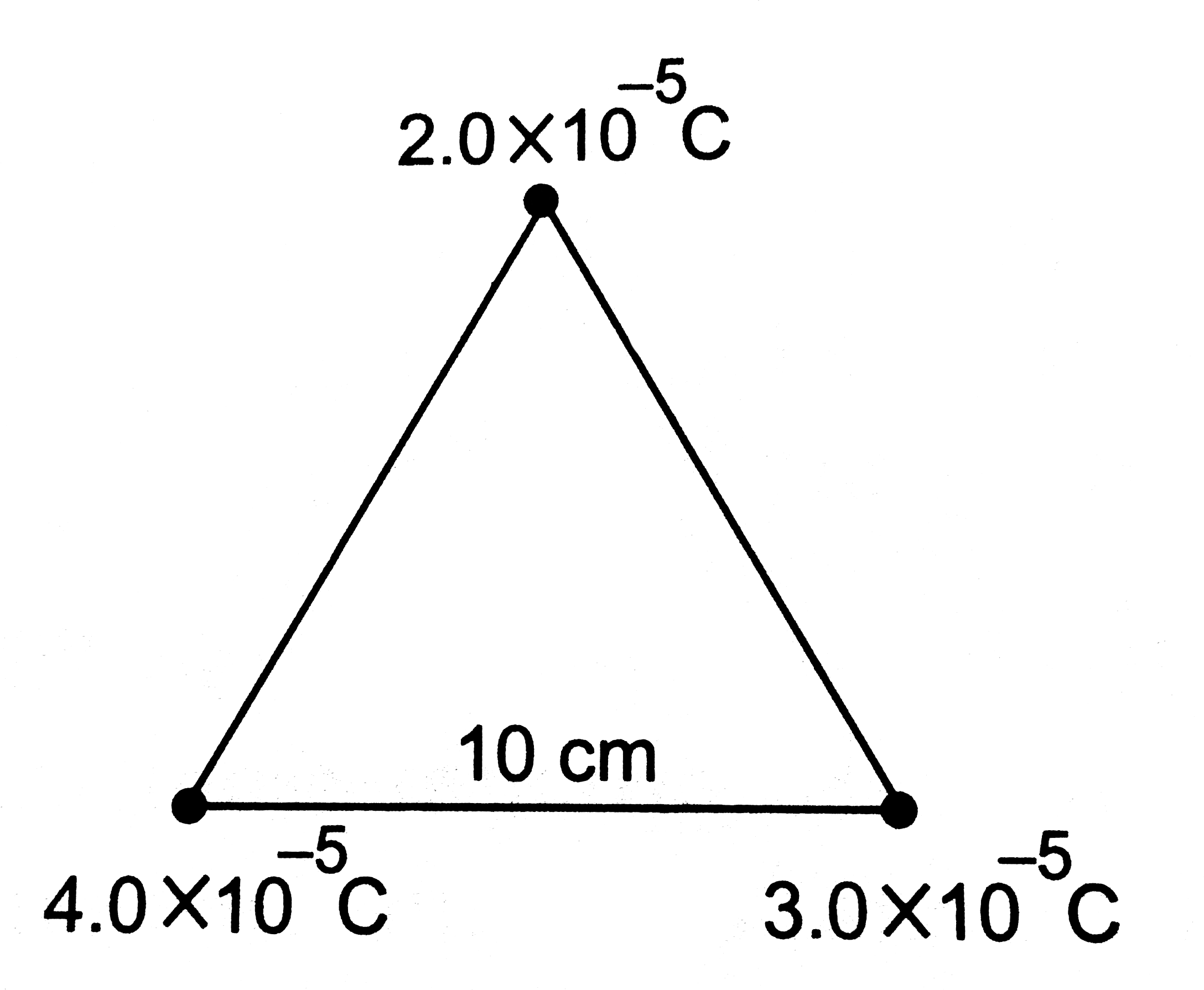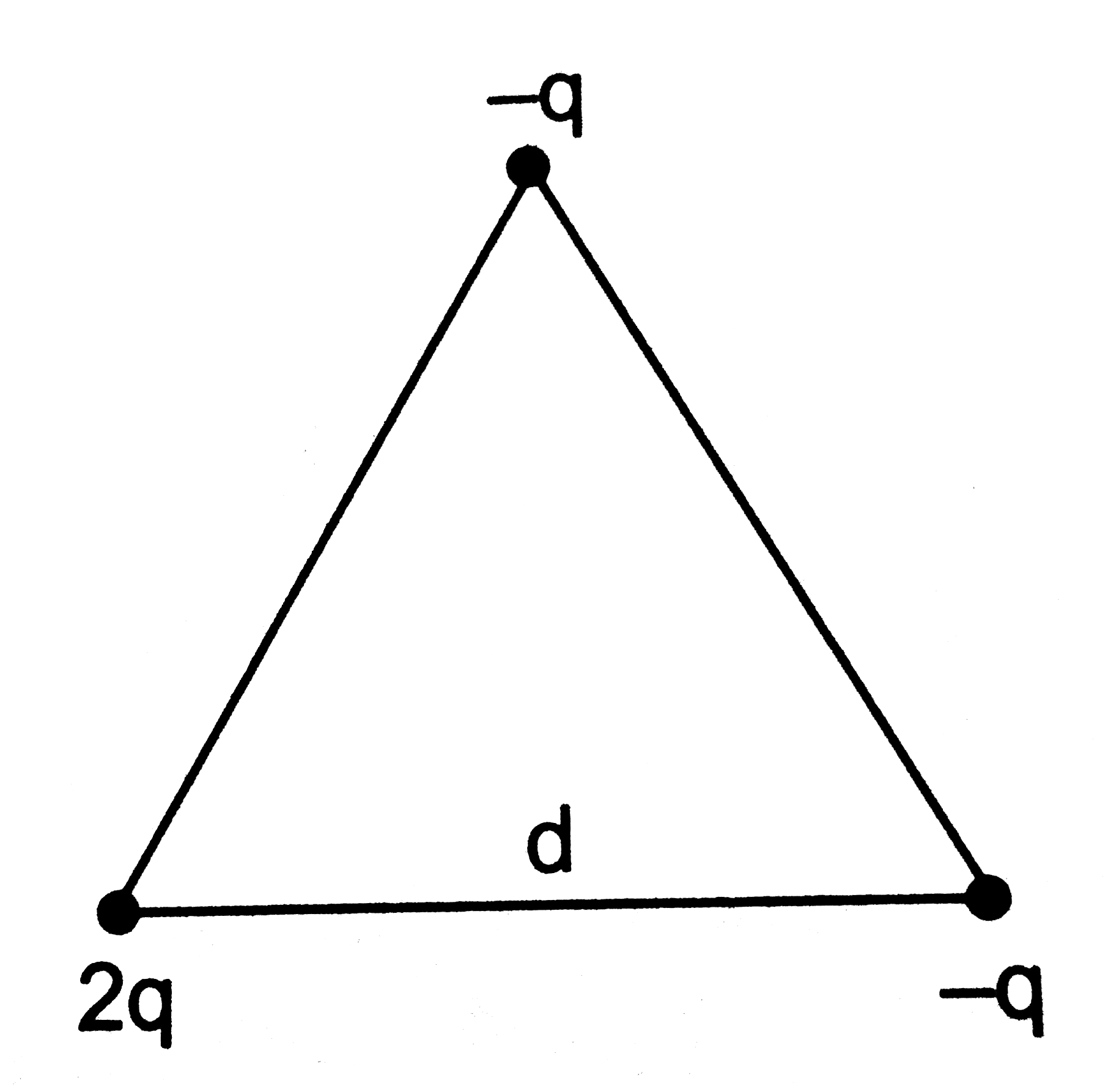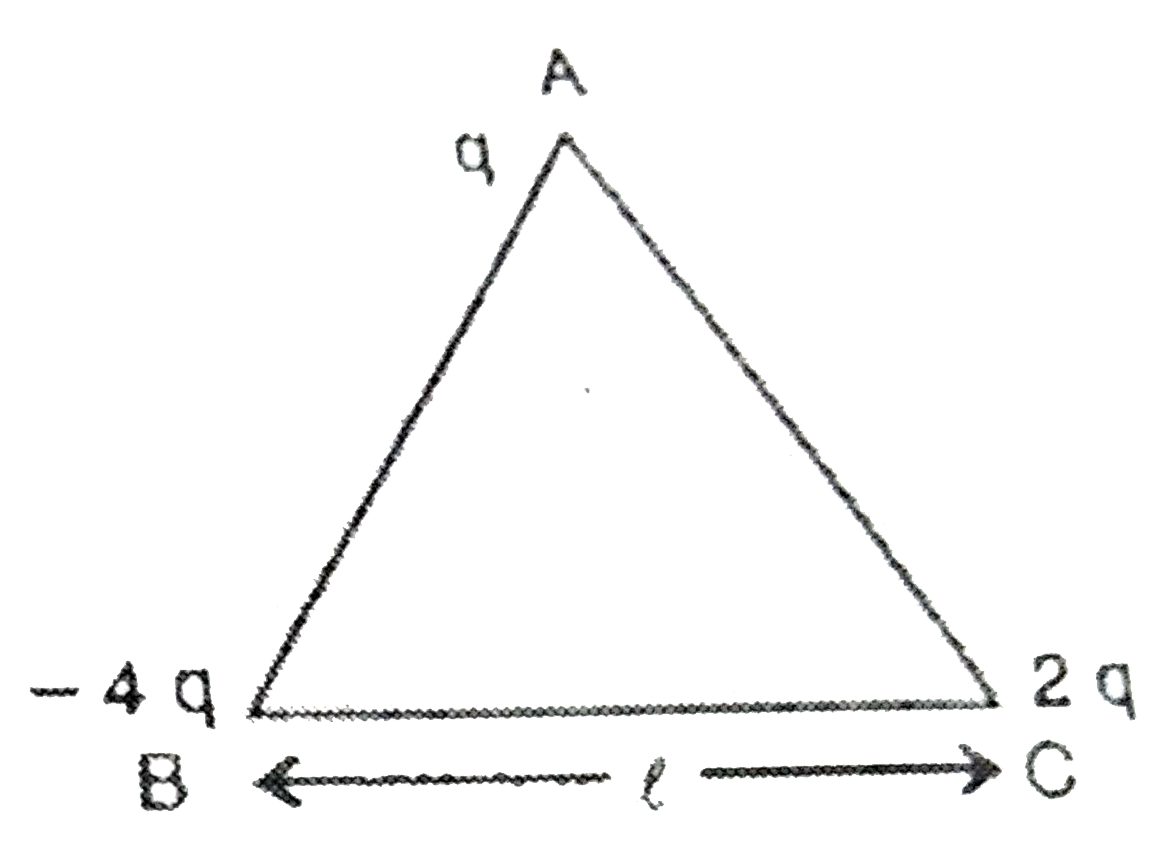Find the amount of work done in arranging the three point charges on the vertices of an equilateral triangle ABC of side 10 cm as shown in the figure.
P.E. of a pair of charges = work done to assemble the charges
Related Solutions
Calculate the amount of work done to dissociate a system of three charge placed on the vertices of an equilateral triangle of side 10 cm.
View SolutionCalculate the amount of work done to dissociate a system of three charges of 1muC, 1muC and -4 muC placed on the vertices of an equilateral triangle of side 10 cm.
View SolutionCalculate the amount of work done to dissociate a system of three charges placed on vertices of an equilateral triangle of side cm.
View SolutionThree point charges of 3 mu C, 4 mu C, and 5 mu C are arranged at the three corners of a right angled triangle ABC as shown in the figure. The work done in moving the charges at A and C, so that the three charges are located at the three corners of an equilateral triangle of side 3 cm is
View SolutionHow much work has to be done in assembling three charged particles at the vertices of an equilateral triangle as shown in figure
 View Solution
View SolutionHow much work has to be done in assembling three charged particles at the vertices of an equilateral triangle as shown in figure
 View Solution
View SolutionHow much work has to be done in assembling three charged particles at the vertices of an equilateral triangle as shown in figure
 View Solution
View SolutionThree points charges of are placed at the corners of an equilateral triangle of side 100 cm. Find the work done to move these charges to the corners of a similar equilateral triangle of side 50 cm.
View SolutionThree points charges of are placed at the corners of an equilateral triangle of side 100 cm. Find the work done to move these charges to the corners of a similar equilateral triangle of side 50 cm.
View SolutionThree points charges of 1 C, 2C and 3C are placed at the corners of an equilateral triangle of side 100 cm. Find the work done to move these charges to the corners of a similar equilateral triangle of side 50 cm.
View SolutionCalculate the amount of work done to dissociate a system of 3 charges 1muC, 1muC and 4muC placed on the vertices of an equilateral triangle of sides 10 cm.
View SolutionThree charges are arranged on the vertices of an equilateral triangle as shown in figure (29.E6) find the dipole moment of the combination.
 View Solution
View SolutionThree charges are arranged on the vertices of an equilateral triangle as shown in figure (29.E6) find the dipole moment of the combination.
 View Solution
View SolutionThree charges are arranged on the vertices of an equilateral triangle as shown in figure find the dipole moment of the combination.
 View Solution
View Solutionदिये गये चित्र में 10 सेमी भुजा वाले समबाहु त्रिभुज के कोनो पर तीन बिन्दु आवेश रखे है B पर स्थित आवेश पर परिणामी तथा इसकी दिशा ज्ञात कीजिए।
 View Solution
View SolutionThree points charges are placed at the corners of an equilateral triangle of side L as shown in the figure:
 find the resultant dipole momentView Solution
find the resultant dipole momentView SolutionThree particles, each having a charge of , are placed at the vertices of an equilateral triangle of side 10 cm. Find the work done by a person in pulling them apart to infinite separations.
View SolutionThree point charges +Q, +2Q and -3Q are placed at the vertices of an equilateral triangle ABC of side l. If these charges are displaced at the find points A_(1), B_(1) and C_(1) respectively, find the amount of work done in shifting the charges to their new positions.
View Solution(a) Three point charges q,-4q and 2q are placed at the vertices of an equilateral triangle ABC of side 'l' as shown in the figure. Obtain the expression for the magnitude of the resultant electric force acting on the charge q.
(b) Find out the amount of the work 4one to separate the charges at infinite distance.
 View Solution
View Solution
